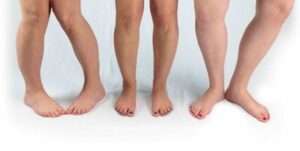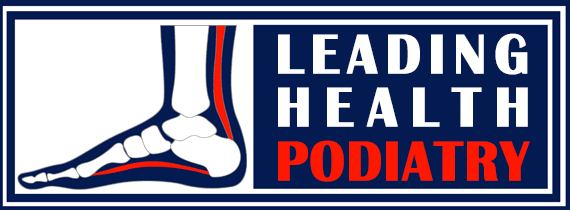Out-Toeing
What is Out-Toeing?
Out-toeing refers to the outward turning of the feet when walking instead of the feet facing straight ahead. This condition is often referred to as being “duck-footed,” and it is not always a cause for concern. In young children, out-toeing can be a normal part of development and usually corrects itself with time. However, in some cases, out-toeing can be linked to other underlying conditions or may cause discomfort and pain. Understanding the causes and treatment options for out-toeing can help address any concerns and improve comfort.

What Causes Out-Toeing?
Out-toeing can occur due to several factors related to the development of the legs and feet. Here are the most common causes:
External Tibial Torsion (Twisting of the Shin Bone)
- One of the main causes of out-toeing is the twisting of the shin bone (tibia) outward, known as external tibial torsion. This twisting occurs during the growth process, and when the tibia twists outwards, it causes the foot to follow suit. This is a common condition in children, but it can worsen as the child grows. As the child becomes more active, out-toeing may lead to knee pain or issues with the patella (knee cap), causing patellofemoral pain syndrome.
External Rotation of the Hip
- The outward twisting of the hip (external rotation) is another cause of out-toeing. This can happen as a result of the child’s position in the womb, and it is often accompanied by tight hip muscles. As children begin to walk, the muscles may relax, and the outward rotation typically resolves itself. However, if it persists, it may require intervention to improve foot alignment and walking patterns.
Flat Feet
- Flat feet, characterized by low or absent arches, can also contribute to out-toeing. When the arches collapse, the feet tend to roll inward, causing the toes to turn outward. Flat feet can cause the appearance of out-toeing, especially when viewed from behind, as the toes point outward while the inner part of the feet bulges. Children with flat feet may require orthotics to support the arch and improve foot positioning.
Femoral Retroversion
- Femoral retroversion is the least common cause of out-toeing. This condition involves the outward twisting of the thigh bone (femur), which causes the entire leg, including the feet, to turn outward. This condition can lead to abnormal gait and is sometimes associated with other hip or leg abnormalities.
When is Out-Toeing Normal?
In many cases, out-toeing in children is simply a normal part of growth and development. Young children, especially those under the age of 2, may exhibit out-toeing as they learn to walk and gain confidence in their movements. This is often a temporary phase, and the condition typically resolves itself as they grow. However, if the out-toeing persists beyond the age of 2, or if it causes difficulty with walking, running, or playing, it may be time to seek advice from a healthcare professional.
How is Out-Toeing Treated?
Treatment for out-toeing depends on the underlying cause and severity of the condition. For many children, no treatment is needed as out-toeing will resolve with time. However, if the condition is affecting mobility or causing pain, there are several treatment options available:
Monitoring and Observation
- In young children who are not experiencing pain, regular monitoring may be sufficient. Healthcare providers will assess whether the out-toeing is improving, worsening, or causing any functional issues, such as difficulty walking or tripping.
Orthotics and Supportive Footwear
- For children with flat feet, orthotics can help correct foot alignment and reduce the appearance of out-toeing. Supportive shoes can also provide extra stability and cushioning to promote proper foot mechanics.
Physical Therapy
- If muscular tightness or weakness is contributing to out-toeing, physical therapy may be recommended. A physical therapist can develop a program of stretching and strengthening exercises to improve flexibility and strength, which may help correct the outward rotation of the feet and legs.
Surgical Intervention
- In severe cases where out-toeing is causing significant pain, discomfort, or interference with the child’s quality of life, a referral to an orthopaedic surgeon may be necessary. Surgical correction may be considered if conservative treatments do not provide sufficient relief.
Conclusion
Out-toeing is a common condition, especially in young children, and in most cases, it resolves on its own as the child grows. However, in some instances, out-toeing may persist or cause pain, discomfort, or difficulty with movement. Identifying the cause of out-toeing is essential for determining the appropriate treatment and ensuring your child’s comfort. If you are concerned about out-toeing in your child, it is always best to consult with a healthcare provider who can offer guidance and recommend the best course of action.
